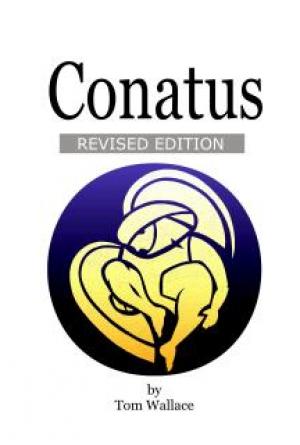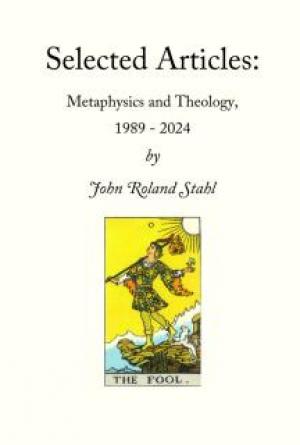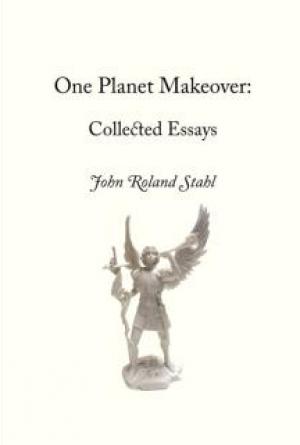The Paths Of Knowledge - Ancient Knowledge And Contemporary Physics
The Universal Nature Of Soul
Pythagora’s cosmotheory supported that spirit is the matter of the world and it is subject to a mental set that expresses the Universal Divinity.
The “Universal Mind” (or the global consciousness as it is differently called nowadays), namely the totality of all the actions and thoughts, is what creates reality around us in the same way quantum physics teaches us that the observer chooses his reality among an ocean of probabilities the moment of the observation, i. e. at the act of thought.
If we examine the beliefs of the ancient Greek philosophers and we compare them to the contemporary scientific thought, we will find that the “kinetic principle” never appeared; it is a law that has always existed and its substance is plain energy. This transcendent “principle” is completely immaterial; it is the absolute Spirit that defines the quality of God.
What is, however this eternal energy of the “kinetic principle”? According to Aristotle, it is the plain cognition of itself. The Universal “Mind” understands itself, when the Divinity “meditates herself”. We are talking about “cognition of cognition”. And since the human, according to Aristotle, is the only Being that takes part in the spirit of creation, we are able to support that when he realizes the united existence of the universal mind, only then will he have conceived the notion of God.
Anaxagoras is the first thinker in the history of world that separated matter from spirit, the souled from the soulless and supported that the cosmic “Mind” includes all the laws that express the activity of God.
For Anaxagoras the word Cosmos means “order in the cosmic system”. The spirit of God is the creator of the order. The above applies to the entire Universe.
The “deamon” of Socrates is the voice of God that works inside us, it is an echo of the voice that governs the Universe and defines the operation of everything in the world. This way, Socrates unites in a mutual substance the man, the Universe and the God! Socrates cogitates the sky, detects the stars, envisions the entire world and within him there is the profound conviction that through the “cosmic creation” and the “human fate”, a superior Intellect, which is an imprint of our own Intellect, dominates.
Democritus and Lefkipos supported that the atoms are the last molecules of matter which are not susceptible to incisions (they cannot be divided) or fluctuations, are unborn, indestructible, unchangeable and indivisible, complete and perfect, compact, united and simple, while they are numerically infinite, vastly varied in shape and move continuously in space. Namely, using contemporary terminology, Lefkipos and Democritus introduced an energy “conservation principle” of the atom.
Plato believed that every phenomenon of the world is deceptive and everything perceived by the human senses is an illusion. Through Virtue, Plato discovers the immaterial world, which he calls an Idea, and he becomes the founder of Ideocracy. The interpretation of the matter of the visible world is a fraud, for Plato.
The soul has a divine origin, it is related to the Ideas, but it is the only thing in the world that is similar to the Ideas. By knowing, the soul of the divine becomes divine itself and equal to God Himself. Dialectics is the queen of the sciences and the only path to true knowledge.
The eastern and Asian philosophies and religions were led through introspection, meditation, intuition, insight and mystical experience to the understanding of the deep structure of the natural world. We could say that they do not constitute philosophies, with the west notion of the term, since they are not expressed by the rational intellect, the logical argument and the declarative language of science, but by parables, allegories, images and poetic language.
The eastern philosophy points a path to the revelation of truth, namely the living experience that humans, plants, animals, the planet, the stars, everybody and everything is One. Everything is made of the same “universal matter”. The separations are metaphysical abstractions and mental constructions. The difference between the western and the eastern and Asian thought is the way that we will reach the ultimate knowledge, the knowledge of wholeness.
There is no methodology on the western sense, a system of predefined rules that aim on a purpose. There is the path of the personal search. That is why we support that the “knowledge” is not mental, namely impersonal, but it is experiential, i.e., personal. The “knowledge” is ineffable and inexpressible, for it is not expressed in words, but shown with attitude, manner and style.
The eastern and Asian thought is poetical thought and wisdom of life. The western philosophy is a rational thought seeking for the truth by the abstract mind and the natural or artificial symbolism of language and mathematics.
The eastern philosophy denied the division into matter and spirit, on which the western philosophy and science was founded. It is talking about the unbreakable One. Namely, it is neither idealism, nor materialism. It does not accept this theoretical division on knowledge.
The western thought founded its building on the division of matter and spirit and from this division emerged the two philosophical currents of materialism and idealism. The western science today ends up on the same conclusion with the eastern philosophy. We surpass this division between matter and spirit. The nature is united. We go over matter and spirit.
Besides, at the contemporary physics, matter and energy is the same. The Universe is energy. The matter is nothing more than concentrated energy. What is more, the division into spirit that observes and matter that is being observed has been refuted by the double slit experiment of quantum physics. In this experiment the observer and the object being observed are one since they affect one another. The science of Chaos teaches us that everything is interconnected, but the contemporary developments in neuroscience, getting started with the brain neurons and their multiple connections, reveal the topology of the brain, a miniature of the universal geometry of everything.
For example, the Hindu tradition of the Upanishads faces the personal ego as an illusion (Maya). Maya separates the personal Ego from the transcendent Being (Brahman). When the illusion of the personal Ego is spoiled, then the compound with the Transcendent Being is achieved. The Transcendent Being is located deep inside the human’s soul (Αtman). The human’s soul (Αtman) and the Transcendent Being (Brahman) are the Same, boundlessly and timelessly. You are this one (tat tvam asi) “The one who lives inside all beings, but is something else compared to them. He, who is being ignored by the beings, but his body is all the beings. He, who controls all the beings from inside. He is your Soul, the internal Auditor, the Immortal”. A Buddhist text gives us a vision of the time: “Buddha taught the past, the future, the natural world and each one of us is nothing but names, forms of thought, public words, simply superficial realities.” A Buddhist sutra says: “the form is the vacuum, the vacuum is the form”. For the Japanese Buddhist zen there is no other space, there is no other time. This moment is everything. In this moment the whole being is being summarized. In this moment everything is available, into this moment eternity penetrates the existence and existence penetrates eternity.
Bohr’s quantum principle of complementarity supports that everything in the Universe consists of opposed sections. The Chinese Tao is the symbol that characterizes the dialectic unity of opposites. The Tao is the rhythm which connects the opposites.
The wisdom of the ancient knowledge and the philosophy of the contemporary scientific knowledge converge and create open thought, the thought of open Wholeness. The core of the open thought is the cosmic consciousness. In every particle, atom, molecule, cell of matter the energy and the information of the cosmic spirit is concentrated. The history of the universal spirit and the spirit of the universal history of spirit unfold through time and in different places. They are history of transformation of our relationship with the world. The knowledge of the cosmic spirit is an unchanged structure, which is expressed in multiple forms in the evolutionary history of the universe.
The metaphysical and the epistemological question
Leibniz in his work “Principles de la nature et de la grace’’ formulates the most primordial question of metaphysics: “Why does there exist something but not nothing?” This question is connected to the “principle of sufficient reason” and urges to the search for a cause or a foundation that affirms the existence of beings. This search ends to the highest being: God. Heidegger separates nothing / zero from beings, the Being emerges from this difference between zero and beings. This difference reminds to the man his mortality and because of that it constitutes the cause of the existential angst. In that sense, the question “Why does there exist something but not nothing” cannot be answered, it remains in air and reminds the man that he lives permanently on the brink of the abyss (zero).
Let’s move from the metaphysical question to the epistemological question that interests cosmology. Why does there exist the universe and not the chaos? The question seems unanswered. However, the answer may be simple: there exists “something” but not nothing, because “something” is simpler than nothing. If there did not exist anything, then nothing would be something that would be nothing. However, since nothing is not anything, this is the reason why something that is nothing is definitely something undefined, that is nothing.
As a consequence the universe has to be something; the infinite chaos that has been zeroed and the product is 1. Namely: ∞ Χ 0 = 1 [“time”], which means that we count number one from the moment that the multiplication of the chaos with the zero produces basically the detachment of the infinite from the zero and equals 2 (duplication: chaos - zero). Each time the distance between chaos and zero is duplicated, we add one more “time” and we have 2. Namely, we are talking technically about a logarithmic scale instead of a “Linear” traditional scale.
Finally, the universe is nothing more but a continuous and uninterrupted logarithmic multiplier of the first two factors, chaos and zero. The appearance of the universe marks the onset of light which results from the operative Darkness – the Dark Energy. Light and darkness are nothing more than the two sides of the same coin: the Primary Unit (1), which has no beginning, since it arises as a product of infinity and zero (=chaos).
It has to be reminded that in Cosmogony of Hesiod it is mentioned that the world as formatted matter, was created from Chaos (abyss), from nothing, blank, zero. The world, that is, was created from the undefined, the unformed, that which can transform into anything.
Basic scientific assumptions
The first scientific assumptionof the contemporary scientific thought, which is confirmed by the experimental procedure, is that the perceivable material reality is a fallacy of the human physiology, which is created inside specific brain regions with the aid of our sense organs. The material reality is no more than a matrix.
According to the Special Theory of Relativity, the material universal reality is nothing more than a “projection (an image, a mirroring) of whatever exists on the real four dimensional non Euclidean and invisible Universe on a false three dimensional and Euclidean space that is created by our senses.” This space is called, by the Special Theory of Relativity, Minkowski space.
The second scientific assumption is the concept of Wholeness. The Universe of the contemporary science is a single system that cannot be divided into parts. The sense of individual objects and forms is nothing more than a fallacy which is based on a peculiarity, basically, of our vision and our cerebral constitution in general. The Universe is united and indivisible, but it can be expressed in multiple forms.
Inside the united and indivisible universal Wholeness, every thought and action we make concerning the part, creates the reaction of the whole towards us. In short, whatever we are doing and in whichever way we are doing it, has a multiple effect on us, from every “corner” of the universal unity. The meaning of universal, indivisible unity creates a new social and ecological awareness, since the social and the nature are structural parts of the whole and every action we take against it, results in a reaction of the whole cosmic creation against us.







